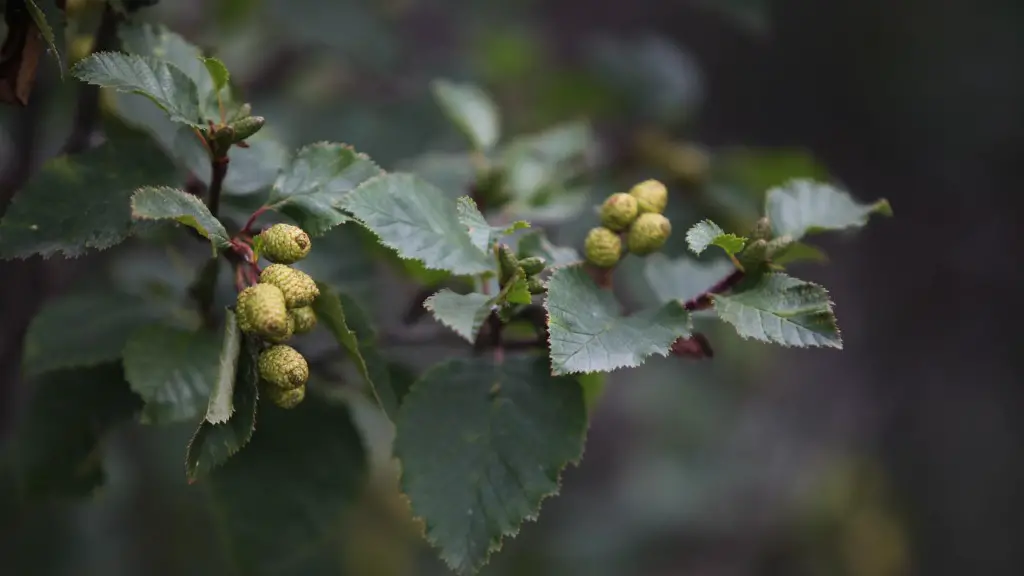Rules for watering
Avocado trees need to be watered regularly, but not too often, in order to be healthy and produce fruit. The amount of water needed depends on the size of the tree, soil type, temperature, and location. In general, avocado trees should be watered every 7-14 days, although they may need more or less water in times of drought or extreme heat. When watering, it’s best to provide a deep, slow drench of water so that it gets down to the root system.
Signs of underwatering
The most common sign that an avocado tree is not getting enough water is wilting. If the leaves of the tree droop or twist, this may indicate that it needs a deep watering. If left too long without water, the tree may become stressed and fruit production may drop. Additionally, the bark may become dry and cracked indicating that the tree needs more water.
Signs of overwatering
While it’s generally easier to tell when a tree needs more water than when it needs less, it’s still possible to overwater. Overwatering can cause root rot, which can be a serious and even fatal problem, and is one of the leading causes of death in avocado trees. Some of the signs of overwatering include yellowing leaves and leaf drop, stunted growth, and an increase in root and stem diseases.
Considering climate conditions
When it comes to how often to water an avocado tree, considering the local climate conditions is key. In areas of high heat or with frequent droughts, trees may need more water, while in cooler climates with more rain, they may need less. If the area you live in has intense periods of heat and drought, it’s a good idea to use a moisture meter or soil probe to check the moisture levels in the soil periodically.
Seasonal consideration
Most avocado trees will need less water in cooler months and more water in hot months. In general, the tree should be watered more often in the late summer and early fall, when the temperatures are high and the tree is producing fruit. In the winter and spring, when temperatures are lower, the tree should be watered less frequently.
Types of irrigation
When it comes to how to water an avocado tree, what type of irrigation system you use is just as important as how often to water it. A drip system is usually best, as it allows for slow and deep penetration of water to get to the root system. This prevents leaf burn, root rot, and other problems that can occur from overwatering. Additionally, mulch or compost around the base of the tree can help to retain moisture and provide essential nutrients.
Fertilizer and nutrients
In addition to water, a healthy avocado tree also needs regular fertilizing and adequate levels of nutrients in order to provide optimal fruit production. Most trees should be fertilized with a balanced fertilizer that is specifically formulated for avocados every 3 months, or according to the manufacturer’s instructions. Additionally, the soil should be tested regularly, and nutrient-rich amendments should be added as needed.
Inspecting the tree
Regularly inspecting the tree can also help with determining how much water it needs. Checking the leaves, stems, and bark of the tree will give you an indication of its health and need for water. Leaves should be firm and glossy, and not drooping or wilting. Stems should be strong and thick, and the bark should not be dry and cracked. If any of these indicators show that the tree needs more water, then it’s time to water it.
Choosing the right time to water
Finally, it’s important to choose the right time of day to water an avocado tree. Early morning is usually the best time, as the sun is not yet too high in the sky, and the temperatures are lower. This will help to ensure that the water gets absorbed into the soil rather than being lost to evaporation. Additionally, watering in the evening can be problematic, as it increases the risk of foliar diseases such as mildew and leaf spot.
Types of soil
The type of soil that the avocado tree is planted in can also be a determining factor in how often it needs to be watered. Clay soil retains moisture for longer, and may not need to be watered as frequently as sandy or well-drained soils. Additionally, raised beds are usually better for avocado trees, as they provide better drainage and allow for more room for the roots to grow. If the soil is too water-retentive, it’s a good idea to add organic matter such as compost or mulch to help with drainage.
Monitoring groundwater level
It is important to monitor the groundwater level of the area in which the avocado tree is planted. If the groundwater level is too high, the tree may not receive enough oxygen and can suffer root rot. Additionally, it’s important to check the tree’s proximity to other sources of water, such as septic systems or irrigation canals, as this can affect the tree’s water supply.
Techniques for watering
When watering an avocado tree, there are several techniques that can be employed to ensure that it is getting enough water but not too much. A good technique is to water deeply and slowly, as this will allow the moisture to penetrate down to the root system without causing harm to the tree. Additionally, adding mulch or compost around the base of the tree can help to reduce evaporation and retain moisture.
Using pesticides
Some gardeners may choose to use a fertilizer or pesticide on their avocado tree to control pests or promote growth. However, it is important to keep in mind that these products can affect the tree’s water needs, as they can change the soil composition and absorption rates. Additionally, some pesticides may interact with the soil’s natural microbes and could cause root rot, so it’s best to exercise caution when using them.
Watering frequency
In conclusion, the frequency of how often to water an avocado tree will depend on many factors, including climate conditions, soil type, nearby water sources, and the size of the tree. In general, it’s best to water the tree deeply and slowly every 7-14 days, unless there are unusual circumstances. Additionally, regularly inspecting the tree and adding mulch or compost for moisture retention can also be beneficial.


